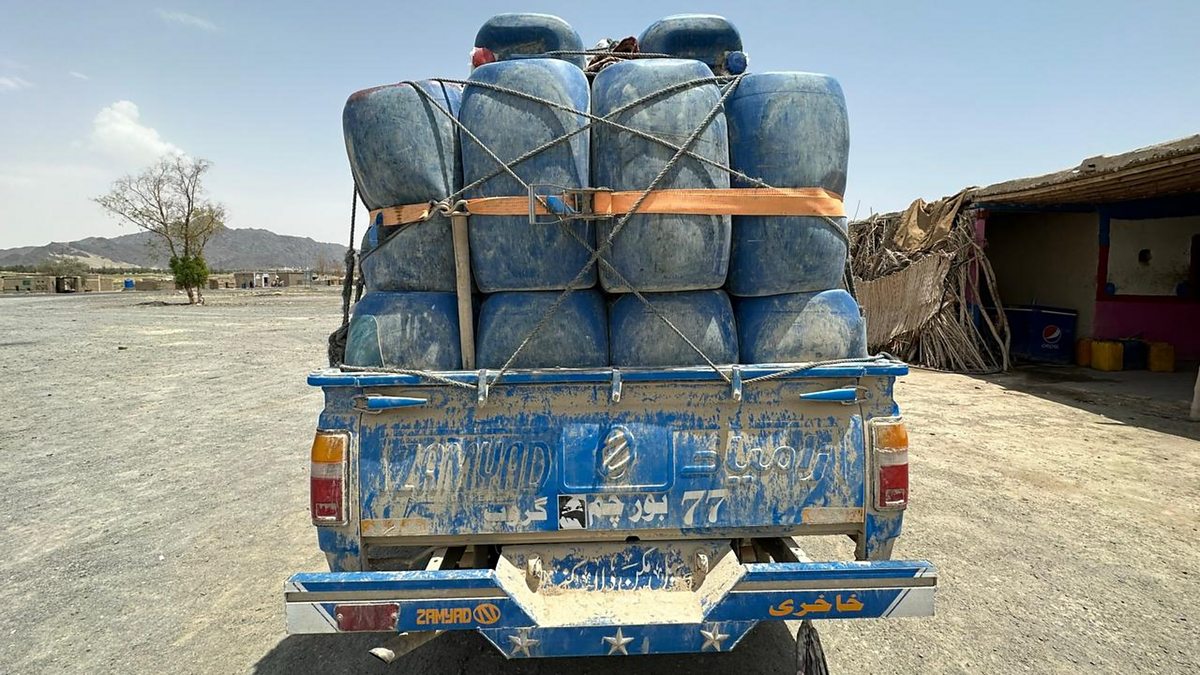
The story of Grahamstown decline has become one of the most talked-about issues in South Africa’s Eastern Cape. Once celebrated for its cultural festivals, educational institutions, and vibrant local economy, Grahamstown is now a city facing growing challenges. Residents are witnessing infrastructure crumble, local services weaken, and an overall sense of neglect take hold. This article takes a closer look at the allegations of who might be behind this decline and why the conversation has become so heated among locals.
Grahamstown decline and the community’s cry for accountability
For years, Grahamstown decline has been unfolding in plain sight. Residents report potholes left unfilled for months, unreliable water supply, and electricity disruptions that disrupt daily life. The frustration among citizens is palpable as they watch the once-thriving city lose its charm and basic services. Community leaders have organized meetings and peaceful protests, demanding answers from local authorities, yet responses have been slow and vague.
The growing concern is not just about decaying infrastructure but about the feeling that the people of Grahamstown are being ignored. Parents worry about the state of schools and whether their children will have access to proper education. Business owners, once proud to invest in the city, now hesitate to expand, fearing that poor infrastructure will drive customers away. Every passing month deepens the sense that this decline is systemic and not accidental.
At the heart of the community’s demand is a call for transparency. Citizens are asking to see where public funds are going and why they are not being used to maintain roads, water systems, and public spaces. This demand for accountability has become the central point of discussion, uniting people across social and political divides.
Grahamstown decline tied to allegations of corruption
Several whistleblowers and former municipal employees have stepped forward, alleging mismanagement and even corruption as the main drivers of Grahamstown decline. According to these insiders, contracts for infrastructure repairs have been mishandled, budgets have been misallocated, and some projects have stalled indefinitely. These allegations have fueled public anger and created a sense of betrayal among citizens who believed their tax money would keep the city running.
Investigative journalists have begun looking into these claims, uncovering a series of questionable financial decisions made over the past decade. Reports suggest that millions of rand were spent on projects that were either never completed or delivered far below expected standards. In many cases, residents say they never saw the supposed improvements that were promised during election campaigns.
This has led to widespread speculation about who benefits from the current state of affairs. Some argue that political factions are deliberately allowing the city to collapse to gain control over lucrative redevelopment contracts in the future. Whether or not these claims are true, they highlight the deep mistrust between the public and those in power.
Grahamstown decline’s impact on local economy
The economic cost of Grahamstown decline has been severe. Local tourism, once boosted by the world-famous National Arts Festival, has suffered as visitors complain about poor road conditions, unreliable utilities, and lack of proper maintenance of public facilities. Many small businesses that depended on festival traffic have reported declining profits, with some shutting their doors completely.
Unemployment in the area has also risen. Young graduates are leaving Grahamstown in search of opportunities elsewhere, resulting in a brain drain that weakens the city’s future potential. Property values have dropped, making it difficult for homeowners to sell and relocate, trapping many families in a cycle of frustration.
The longer this decline continues, the more difficult it becomes to attract outside investment. Investors are reluctant to fund projects in a city where infrastructure failures might jeopardize operations. This has created a vicious cycle where lack of investment leads to further decline, making recovery even harder.
Grahamstown decline and public health concerns
One of the most alarming effects of Grahamstown decline is its impact on public health. Broken sewer systems, leaking pipes, and uncollected waste have created conditions that some residents describe as unsafe. Water contamination incidents have been reported more than once, leaving families worried about the health of their children. Local clinics have seen an increase in patients suffering from waterborne illnesses, putting additional pressure on already limited healthcare resources.
The lack of regular waste collection has led to growing illegal dumping sites around the city. These sites attract vermin and stray animals, increasing the risk of disease outbreaks. Community activists have organized clean-up campaigns, but without consistent municipal support, these efforts only provide temporary relief. The situation has left many wondering why basic sanitation services have been allowed to deteriorate to this point.
Health experts warn that unless the underlying causes of this decline are addressed, Grahamstown could face serious public health crises in the near future. Preventable illnesses could become widespread, and the costs of treating them would further strain municipal budgets. This is why residents are calling for urgent intervention, not just promises of future plans.
Grahamstown decline and political accountability
The question of political accountability lies at the center of the Grahamstown decline debate. Many residents argue that elected officials have failed in their duty to protect the city’s infrastructure and well-being. During election periods, promises of major upgrades and funding announcements are common, but citizens claim that little progress is seen once the votes are counted. This pattern has eroded trust in local government and has led to a wave of calls for political change.
Some civic groups have started gathering signatures for petitions demanding audits of municipal spending. Others have proposed that independent oversight committees be formed to monitor how money is used. There are also voices calling for provincial or even national government intervention, arguing that the local council has proven incapable of reversing the decline on its own.
The political dimension of the problem makes it even more complex. Rival factions accuse each other of neglect and sabotage, turning the issue into a battleground for power rather than a collective effort to save the city. This polarization threatens to delay solutions further as parties focus more on blaming each other than on implementing practical fixes.
Grahamstown decline and cultural heritage loss
Grahamstown is not just any town it is a place known for its deep cultural heritage, rich history, and world-renowned arts festivals. The Grahamstown decline therefore represents not only an economic and political failure but also a cultural tragedy. Heritage sites are falling into disrepair, museums struggle with funding, and many artists who once found inspiration in the city have relocated elsewhere.
Tourists who come expecting a vibrant cultural hub are often disappointed to see neglected public spaces and poorly maintained facilities. This affects the city’s reputation as a destination for both local and international visitors. Without proper maintenance and investment, Grahamstown risks losing its status as a beacon of culture in the Eastern Cape.
Local historians and curators have sounded the alarm, warning that priceless artifacts and archives could be lost if action is not taken soon. They argue that cultural preservation should be part of any recovery plan, as reviving Grahamstown’s identity could attract tourism and renew community pride. For many residents, saving the city’s culture is as urgent as fixing its infrastructure.
Grahamstown decline and education challenges
The education system has not escaped the effects of Grahamstown decline. Several schools report that they are operating with outdated infrastructure, leaking roofs, and broken classrooms. Teachers often have to work with limited resources, and students face an environment that is far from conducive to learning. In some cases, parents have had to pool their own money to make emergency repairs to school buildings just to keep them safe for children.
The decline has also affected higher education. Rhodes University, one of the city’s most prominent institutions, has repeatedly called for better municipal services. Students have staged demonstrations, demanding improved water supply and safer roads leading to campus. Without these basic services, the university’s ability to attract top talent and maintain its reputation is threatened.
Educational experts warn that if these problems are not solved soon, Grahamstown risks producing a generation of students who are academically disadvantaged. This could have long-term consequences for the city’s ability to recover economically and socially in the future.
Grahamstown decline and citizen activism
One of the most inspiring responses to Grahamstown decline has been the rise of citizen activism. Communities have organized neighborhood watches, clean-up drives, and fundraising campaigns to address immediate needs. These grassroots efforts show that the people of Grahamstown are not giving up on their city. They are willing to work together, even when official support is lacking.
Local NGOs and advocacy groups have partnered with residents to create platforms where issues can be reported and tracked. This approach has helped to gather data on problem areas and push for targeted solutions. Citizens are also using social media to document conditions in real time, ensuring that the situation cannot be easily ignored by those in power.
This activism has begun to draw national attention. A recent report by BBC Africa highlighted the struggles faced by Grahamstown and the determination of its residents to fight back. Such coverage may bring additional pressure on authorities to act more decisively.
Grahamstown decline and the path forward
Experts agree that reversing Grahamstown decline will require a multi-pronged approach. Infrastructure must be repaired, municipal management restructured, and funding made transparent. There must also be investment in job creation to revive the local economy and incentives for businesses to stay and grow. Without a comprehensive plan, isolated fixes will not be enough to stop the downward spiral.
Some positive steps have already been taken. The provincial government has pledged new funding for road maintenance and water system upgrades, though citizens remain cautious after years of unmet promises. International aid organizations have also expressed interest in supporting development projects that focus on sustainability and community empowerment.
For those who want to stay updated on similar community-driven initiatives, you can explore more in our Controversy Africa section, which features other stories about civic action and accountability movements.
Conclusion
The story of Grahamstown decline is not just about a city falling apart; it is about the resilience of its people. Residents have refused to stay silent, demanding answers and pushing for solutions. While the road to recovery may be long, the determination of the community offers hope that change is possible. By holding leaders accountable and continuing to work together, Grahamstown can reclaim its place as a thriving cultural and economic hub in the Eastern Cape.


